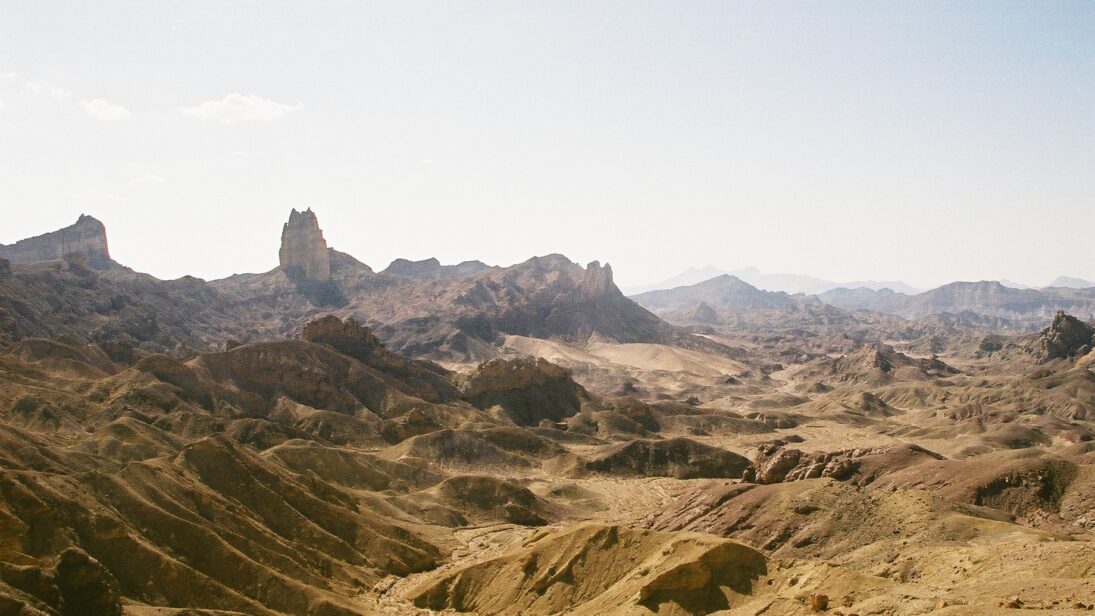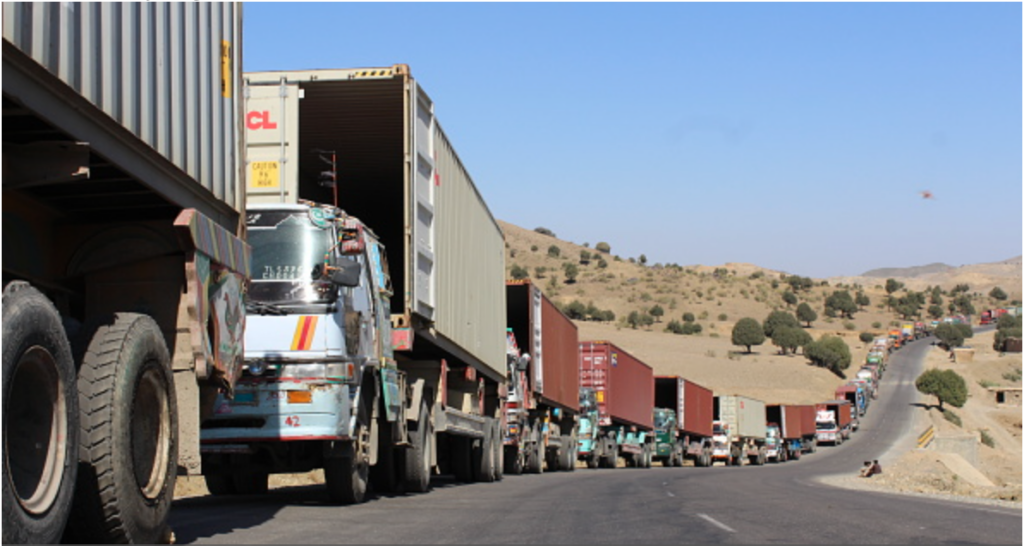
As Pakistan nears completion of its border fencing project along the Durand Line, tensions simmer with the Taliban over the legitimacy of Pakistan’s territorial claim on areas spanning from the Afghanistan-Pakistan border to the Indus River. According to reports, Pakistani forces attempted to erect fences in the Chahar Burjak district and near the Nangahar province, both of which were thwarted by the Taliban as they destroyed installations and clashed with border-forces. Though both countries have appeared to overcome the fallout of these incidents—Pakistan’s National Security Advisor has dismissed altercations between border forces as “local-level issues”—misalignment of both countries border management policies could lead to further tensions along the shared border.
The border between Pakistan and Afghanistan bifurcates both countries along a stretch of approximately 2,670 kilometers of land, with ethnic Pashtuns living on both sides. These border communities have maintained close ties in view of their linguistic, cultural, kinship and economic affiliations, and have relied on these relationships for cross-border commuting for livelihood, familial communication, access to healthcare and education. For many Afghans, especially Pashtun communities predominantly living along the border, Pakistan’s effort to formalize the border has been seen as a blatant disregard of the history and socio-spatial dynamics of the region.
Pakistan’s official stance regarding its border-fencing project has come against the backdrop of unwanted cross-border movement and regional militancy. Officials have insisted that fencing the border would help regulate and control unwanted movement on both sides—containing subversive elements at the point of origin would make counter-terrorism initiatives more successful. However, even prior to the Taliban’s takeover, Afghanistan has seen Pakistan’s advances as a step to cement and formalize its claim over the contentious border. Pashtun communities straddling the border view border-fencing with skepticism, perceiving the project a top-down attempt at state-making that glosses over the historical, socio-economic, and familial ties binding communities cross-border.
Political Maneuvering and Harsh Realities
The Durand Line and the politics surrounding the partitioning of Pakistan and Afghanistan is a festering wound that continues to irk the Afghan people, amidst political instability. The Taliban’s strong nationalist stance opposing a fence on the Durand Line could be an attempt to woo the masses and gain their favor. This is despite the group’s reliance on Pakistan to make a case for their acceptance by the international community. The lack of popular support for the return of the Taliban was exposed to view as mothers threw their babies over razor wires pleading to soldiers to take them along. Thousands of helpless Afghans rushed to the airport as painful images surfaced of people clinging on to a U.S. plane as troops exited with their tails between their legs. Soon after, Afghans came out on the streets to protest the Taliban’s regime despite a ban on demonstrations. Alignment with Afghanistan’s historical stance on the Durand Line could help the Taliban position themselves as guarantors of Afghanistan’s sovereignty, appeasing nationalists and dissociating from the long-held perception of the Taliban as Pakistan’s proxy.
On the other hand, Pakistan faces challenges managing the realities of a Taliban-governed Afghanistan. Performative governance through the construction of barriers will serve little purpose for Pakistan’s security when insurgent elements and religious hardliners within Pakistan have been invigorated and emboldened by the Taliban’s dramatic victory across the border. Splintered factions among hardliners have demonstrated political strength. Significant developments include Al-Qaeda proclaiming its support for TTP due to their shared synergies of an Islamic brotherhood and the manifest close relationship between the Afghan Taliban and the Tehreek-e-Taliban (TTP) in Pakistan. Immediately after Afghanistan’s takeover by the Taliban, TTP fighters and leaders imprisoned by the former Afghan government were released.
Pashtun communities perceive the fencing project a top-down attempt at state-making that glosses over the historical, socio-economic, and familial ties binding communities cross-border.
The ideological affinity of the Afghan Taliban and the TTP, or the Pakistani Taliban—in addition to Pakistan’s waning leverage over the Afghan Taliban post-takeover—is a dangerous combination for Pakistan. Pakistan could face violent spillover effects from Afghanistan. There has been a quantum leap in TTP attacks this year, especially in the provinces of Khyber Paktunkhwa and Balochistan. Despite this, Taliban leadership has given no clear indication of cracking down on the group in the near future.

The Border and its People
As state leaders debate the border fence issue, Pakistan has already begun seeing the security blowback of Afghanistan’s political situation on its soil. Southwestern Balochistan, South and Western Waziristan have seen an uptick in violence with several militant attacks reported. There is a genuine fear that the practical manifestation of Taliban’s radical ideology and combative strength in Afghanistan could reboot the jihadi project in Pakistan, and, by extension, the use of local recruits as cannon fodder. This could all jumpstart the revival of radical ideology in the region, spearheaded by undocumented madrassas, terrorist groups and religious parties supporting the Taliban. Minority communities regularly targeted by the Taliban—the Hazaras and Shias—might be left to bear the brunt of the rise of militancy in the region.
At present, livelihoods are at stake as traders in the region face TTP militants threatening violence if not given their cut. Border closures and strained bilateral relations have created an unpredictable environment for laborers relying on cross-border movement for their livelihoods, and traders and businesses hoping to invest and operate in the area—inhibiting regional development.
Amidst statecraft and realpolitik, border communities suffer as their cross-border affiliations are disrupted through border-making processes. Political boundaries seldom correspond with cultural, linguistic, and ethnic boundaries. State policies that fail to encapsulate these dynamics forge policies that omit the full picture, therefore, failing to address the issue through the proposed or intended course of action.
Amidst statecraft and realpolitik, border communities suffer as their cross-border affiliations are disrupted through border-making processes.
Pakistan has typically made unilateral decisions regarding border management. Though previous Afghan governments resisted border-fencing while adhering to diplomatic norms, the same cannot be expected from the Taliban regime. Border-fencing is a supplementary measure to combat terrorism. If political leadership does not tread carefully, the decision to fence the border unilaterally might lead to a surge in violent resistance from the Taliban along the border and within the country. The retaliation and pressure tactics of the Taliban may prove disastrous for civilians, especially bordering communities, and the country’s security forces. And with the United States declaring that it is no longer in the national interest to remain in Afghanistan, Pakistan’s leadership must come to grips with the fact that successfully enduring the spillover of Afghanistan will be contingent on its counter-terrorism policies and the strength of its diplomatic channels.
**
Image 1: Nasha Ila via Flickr
Image 2: Anadolu Agency via Getty Images


